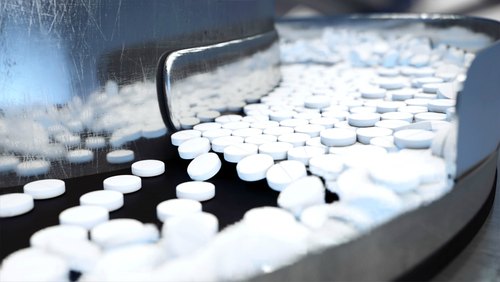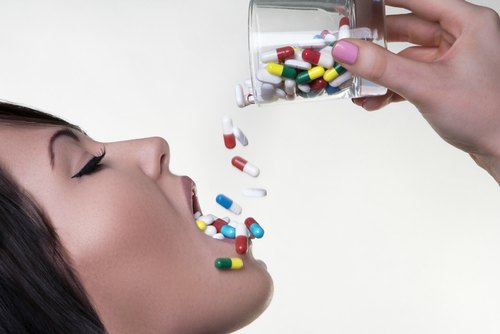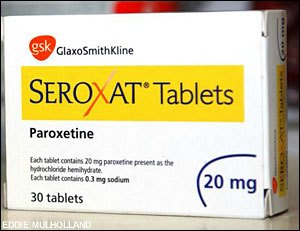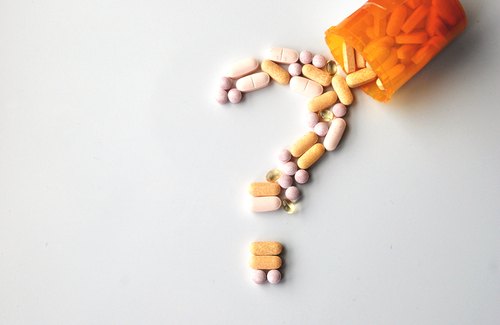Introduction
Before we go any further I want to dispel this mythical medical theory that high Dopamine causes Schizophrenia and low Serotonin causes depression. First of all its erroneous and secondly it neither asks nor answers the question, if the theory was right “ Well how did that occur?” We need to ignore advertised fairy tales like the following:

Citalopram “Celexa helps to restore the brain’s chemical balance by increasing the supply of a chemical messenger in the brain called serotonin. Although the brain chemistry of depression is not fully understood, there does exist a growing body of evidence to support the view that people with depression have an imbalance of the brain’s neurotransmitters”
Fluoxetine “When you’re clinically depressed, one thing that can happen is the level of serotonin (a chemical in your body) may drop. So you may have trouble sleeping. Feel unusually sad or irritable. Find it hard to concentrate. Lose your appetite. Lack energy. Or have trouble feeling pleasure…to help bring serotonin levels closer to normal, the medicine doctors now prescribe most often is Prozac”
Sertraline “While the cause is unknown, depression may be related to an imbalance of natural chemicals between nerve cells in the brain. Prescription Zoloft works to correct this imbalance. You just shouldn’t have to feel this way anymore”
Chemical imbalance in the brain…HOW?…CAUSED BY WHAT ?
The Serotonin Fairytale

Once upon a time, in Neurotransmitter land there was not enough serotonin to go around for the population who lived in this land so…..
In 1965 a gentlemen of high standing working for the National Institute of Medical Health (NIMH) published a paper in 1965 in the American Journal of Psychiatry..that put forth a mystical hypothesis that Norepinephrine (that was in short supply) was the cause of depression, however, he did state that there existed no evidence of such but it was simply a theory. This sparked a revolution of Serotonin seekers such as Malcolm Bowers at Yale University in 1969 , and then in 1971 researchers at Mcgill also examined the theory. All reported that serotonin (or its metabolized form 5-Hydroxyindole Acetic Acid (5-HIAA)) were all normal in depressed people. So that’s three experimental research initiatives spanning 6 years and they all concluded the same thing. You would think that would be that..the theory is wrong… so let’s move on..but no. Scientists thought that if look hard enough, even if they have to dismember the body and disassemble the brain there must be a wastage of serotonin somewhere …maybe it falls out of the ears of depressed people or maybe it gets turned into gas and leaks out from some other orifice.
In 1974, even Bowers revisited his own research and concluded the same results. Two researchers in the same year Joseph Mendels and Alan Frazer examined the content of monoamine (norepinephrine, serotonin, and dopamine) depletion from the administration of Reserpine (a herbal drug that was initially used for high blood pressure). He found that this did not induce depression, in fact, since it is of a natural herbal extraction, it actually calmed the body, in essence, acting as an anti-depressant. Again another proof that this theory was wrong. Due to the academic arrogance of these people and with enough muster not to let this theory die…must have said ”We are going to find out what happened to this substance if its the last thing we ever do”. A Marie Asberg in 1975 at the Karolinska Institutet of Sweden had her ‘eureka’ moment announcing that 20 of her 68 depressed patients had low serotonin levels with 2 out of the 20 that actually committed suicide and declared that this may be evidence of ‘ a biochemical subgroup of depressive disorder characterized by a disturbance of serotonin turnover. To confirm her theory she measured the Cerebrospinal 5-HIAA levels which is shown below:
25% of the normal group = 15 nanograms/millilitre
50% = 15 to 25ng/ml
25% =>25ng/ml
The normal level being 20 ng/ml,
Although 20 (29%) of her 68 depressed patients had below 15 ng/ml, so did 25% of her normal group that measured 15 ng/ml, but still below the normal of 20 ng/ml….
…..Sorry Dr Asberg, this is not going to fly either.

Finally, from a research perspective this mythical theory was finally buried underneath all the other failed medical theories, but then in 1984 researchers from NIMH again did the same research and found the same results that the measurement of cerebrospinal 5-HIAA was variable (some high, some low) in depressed patients, but this did not stop Eli Lilly launching Prozac claiming that this new wonder drug will cure the low levels of Serotonin causing your depression (even if this is not a fact). WHAT A COMEDY OF ERRORS..and still the public gets sucked in.
“Chemical imbalance is sort of last century thinking. It’s much more complicated than that”.
-Dr Joseph Coyle Prof of Neuroscience at Harvard Medical school
….and everybody did NOT live happily ever after..
The Dopamine Fairytale

Once upon a time in the other transmitter land of Dopamine people were breathing in too much Dopamine so….
A Jacques Van Rossum of Nijmegen University in Holland in 1966 put forward his hypothesis that too much Dopamine mysteriously occurs in the brain causing Schizophrenia. This why Schizophrenics hear and smell things that are not really there, and begin to hallucinate and become delusional. In 1975, Solomon Snyder at the Johns Hopkins Medical school and Philip Seeman at the University of Toronto identified the main Dopamine receptors D1 and D2. Even Malcolm Bowers got into the act, since his original Serotonin theory ‘blew a tire’, and both Snyder and Seeman knew that Antipsychotic drugs block 70-90% of the D2 receptors. Bowers research on Dopamine ‘blew another tire’ when he found Dopamine metabolites measured in the cerebrospinal fluid were normal in un-medicated schizophrenics…this guy must have given up on neurotransmitter research at this point and taken up embroidery..lol.
But these avid research pioneers did not give up..why should they..this time, they thought, we must find the cause of excess Dopamine even if we have to search high and low..we will find the source. Seeman announced in the magazine Nature after 20 schizophrenic brains had been autopsied and found extra dopamine receptors…that this must be the cause of Schizophrenia….wait a minute..all of these autopsied patients had been taking Neuroleptic drugs prior to death which could also have caused…
THE BODY TO ADAPT BY CREATING MORE DOPAMINE RECEPTORS TO COMPENSATE FOR THE POISON THAT HAD BEEN ADMINISTERED PRIOR TO THEIR DEATH…DAH
(A Homer simpson moment).

A memorable lyric from a ‘Temptations’ song ‘Ball of Confusion’…and the Band played on… describes the relentless juggernaut of drug manufacture to keep churning out the anti-depressants and the anti-neuroleptics despite the two failed medical theories, and still to this day patients are being led by the thousands to the slaughter continuing to take this stuff, thinking that it’s going to cure something or help somebody.
At last, somebody with some sense appeared on the scene..Steve Hyman, who was director of the NIMH, stated that psychotropic drugs create anxiety in the neurotransmitter complex, and in response the brain goes through a series of compensatory adaptation, so when a neurotransmitter is blocked as in neuroleptic drugs for the treatment of excess dopamine the brain compensates by increasing receptor density. Conversely, as with antidepressants treating ‘low Serotonin’ by ensuring that it hangs around the synapse longer, the presynaptic neurons decrease their firing rate and the post-synaptic neuron decrease their density as I explained in previous articles.
….and again everybody did NOT live happily ever after..
Allostatic Load: Types III & IV

Recap
Just as a recap, Allostatic load is a term used to define a cumulative result of an allostatic state (Allostasis is the true biological stability condition maintained by environmental change). It is normally a beneficial and adaptive condition that results from normal daily activity to survive in every species. If the environment changes such as food shortage or bad weather, circumstances, say, for breeding can put an additional toll on its natural habits and compromise breeding patterns and thus induce an Allostatic load or even overload. This is synonymous to the additional toll put on humans that take pharmaceutical drugs. This concept of allostatic load applied to the human organism was first defined by McEwan and Stellar in 1993. (Actually it was Hans Selye (1907-1982) who first raised this notion of stress and body adaptation when he introduced GAS (General Adaptation Syndrome)).
Recap -Allostatic load Type I (Toxicity)
In part 6 we discussed allostatic loads type 1 which deals with Toxicity which occurs as a dual process, first the gut becomes unbalanced releasing toxins into the brain potentially causing cognitive dysfunction and secondly the psychotic drugs are causing damage to the neurons by repeated toxic effects. An example of this is the drug Haldol which is converted by monoamine *oxidase (MAO) a family of enzymes that are bound to the outer membrane of the mitochondria, whose purpose is to catalyze the oxidation of Monoamines. MAO’s are found in neurons and Glial cells (Astroglia) in the brain and spinal cord. Astroglia or Astrocytes function includes biochemical support of endothelial cells that form the blood brain barrier (although not a significant role compared to the Tight junctions and the basal lamina (on which the epithelium sits) of the cerebral endothelial cells). In addition, Astrocytes provide nutrients to nervous tissue (such as lactate), providing extracellular ion balance and the repair process within the brain and spinal cord after trauma.
Monoamine Oxidase (MAO) inhibitor drugs
Again it is foolishly believed that some psychiatric and neurological disorders are based on too much or too little MAO activity which is why they have created the MAO inhibitor drugs. On the other hand Haldol, according to Dr Grace Jackson in her book ‘Rethinking psychiatric drugs’ is converted (I assume when metabolized) into pyridinium compounds which are toxic to the brain and can destroy neurons by compromising the cell membrane and mitochondrial respiration. Dr Jackson states that these compounds have the same effect as the synthesized Demerol (meperidine or synthetic heroin), a street drug that was sold in Northern California back in 1982, and injected by addicts that turned them into ‘Frozen addicts’ by inducing severe Parkinsonism (Langston et al 1983). The compound was found to be MBTP that produced MPP+ a toxic metabolite.
*Monoamine Transmitters are comprised one amino group (derived from the 3 aromatic amino acids Phenylalanine, Tyrosine and Tryptophan) which are manufactured using an exclusive pathway only to bacteria called the the Shikimate pathway within the gut flora. Classic monoamines are Histamine, Catecholamines (epinephrine (adrenaline), dopamine, (Norepinephrine) and Tryptamines (Serotonin and Melatonin)
Allostatic Load: Type III

Drug Tolerance
This involves a prolonged response, once the stressor or drug has been removed, specifically the stress on the body when individuals stop taking a drug. A common example is the failure of the body to shut off hormonal stress response or blood pressure stays elevated due to, say, work related issues, a family tragedy or a prolonged fearful event. Another example related to pharmacology is sleep deprivation (which we know is a common psychotropic drug side effect; Insomnia). Another prolonged induced effect from pharmaceuticals is drug tolerance that requires a higher dose given to an individual to get the same effect multiplying deleterious effects on the body. These effects have been defined as decremental (receptor changes reducing the drug effects) or oppositional (initial drug effects are counteracted by other internal physiological changes to post synapses, signal transduction, dendritic degradation or growth, neurotransmitter degradation or growth, or alterations occurring within the HPA axis). Whatever the reason the drug is poisoning the body and changing the natural way it should function.
Withdrawal
A prolonged negative response occurs with Withdrawal, a phenomena that erupts when the drug is no longer taken and the body must re-adapt to this new condition. Withdrawal syndrome from both SSRI and Neuroleptic drugs can cause shock like sensation, diarrhea (disturbance of the enteric nervous system), nausea, vomiting and tremor. Specifically with SSRI withdrawal additional symptoms could be gait instability, headache, visual disturbance and dizziness. Specifically with Neuroleptic withdrawal additional symptoms could be myalgia (muscle pain), diaphoresis (sweating), rhinorrhea (runny nose), tardive dyskinesia (stiff jerky movements of the face and body, grimacing and sticking out the tongue). and/or tardive akathisia (a desire to be in constant motion resulting in an inability to sit still and a compulsion to move).
Withdrawal & Rebound
The ignorance of the psychiatric profession use the term Treatment refractory (or resistant ) depression which describe cases of severe depression that does not respond to at least 2 anti-depressants. Furthermore they do not (or refuse to acknowledge) the difference between drug Rebound or drug Withdrawal that are processes left behind when the drug is removed. Withdrawal is aligned both with the decremental and oppositional models, where the former defines the changes in receptors that are created as a compensatory action to a drug. When the drug is removed the body re-adapts using its natural neurotransmitters to interact with its receptors without competing with the drug. In the oppositional model the additional systems that the body recruited to oppose the drug is no longer required and again the body needs to re-adapt to this change.
Stimulant and Antidepressant Rebound
This process of physiological re-adaption or Rebound is not instant and it takes time for the body to readjust causing discomfort and suffering for the host. By removing a neuroleptic stimulant the Dopamine transporter levels that were reduced by the drug, now surge into action sucking in the available Dopamine causing dopamine depletion for neuronal transmission. This causes the host to feel more hyperactive, and a worse feeling of inattention and impulsiveness. By the same token removing an antidepressant the serotonin reuptake transporter (SERT) density that was suppressed and midbrain receptors desensitized by the drug, SERT levels begin to elevate and receptors become responsive again there is a depletion of Serotonin leaving the host to have suicidal thoughts, low mood, fatigue, low energy (anergia) and insomnia.
The Secrets of Seroxat (Paxil)
Documentary airs on Panorama on BBC UK in 2002

In 2002 when the BBC in England aired a Panorama show on the drug Seroxat (Paxil) highlighting the problems of antidepressant dependence and withdrawal it kicked off a deluge of phone calls, and emails from the public. The show also revealed GSK, the manufacturer of Seroxat, had drug some documentation going back 15 years concealing the negative effects of the drug. The show featured Helen Kelsey a 21 year old that was first prescribed Seroxat when she was 17 to treat her panic attacks while she was doing her a-level at school. Not knowing what the drug was, and unable to research the drug herself she simply trusted her prescribing physician who told her the drug was fine. Being on the drug she described how she felt ‘electric shock sensations in her head’, sweating, nausea, vomiting, fever like symptoms, muscle pain, headache, trembling, mood swings, and nightmares.
Seroxat (Paxil) documentary: Two people’s experiences in taking Seroxat
Being trapped by the relentless adverse effects from the drug attempted to wean herself off the drug for the best part of 2002 but every time it made her feel severely ill (typical ‘cold turkey’ symptoms from an addictive effect). She then began taking less per day to reduce the withdrawal symptoms by breaking one daily tablet into several pieces while fighting the withdrawal symptoms. This miserable process made her miss most of her final year of her degree risking failure. The show also featured Maudsley hospital that has a drug help line and it was reported that Seroxat was the number one drug that they received the most calls. Yet the manufacturer’s literature states that ‘You cannot get addicted with Seroxat‘, which implies that an individual can stop the drug whenever they want. Helen found hundreds of other sufferers on the internet trying to kick the drug with horrendous withdrawal symptoms. Another seroxat victim Ed Casey began a series of self mutilation episodes with cigarettes and a razor blade 2 weeks after taking seroxat. Two weeks after Ed revisited the doctor who recommended he continue with the medication and see how it goes…..Excuse me…see how it goes..is this doctor part of Opus dei (‘work of God’)..why does he not just prescribe a Cilice (wire chain with sharp prongs strapped around the leg) so Ed can atone his sins and suppress his desires.
Seroxat (Paxil) documentary: Tragedy strikes implicating Seroxat

The lid finally blew off the deception surrounding the seroxat drug when an incident occurred in Feb 1998 in Gillette Wyoming, home to the Shell family who had a daughter, and were also recent grandparents to their daughters young baby girl. One friday her husband Tim Tobin arrived at the home of his in-laws to join them and his wife for a family weekend, but there was no sign of life and the house was locked with a newspaper still in the front door. Tim asked the neighbors who said that they had not seen them in a while. So Tim called the police who joined him at the house, and without a key they broke a window to gain access. When Tim went upstairs he was devastated to find both Mr and Mrs Shell, their daughter and her daughter in the bedroom shot to death. Investigators discovered that Mr Donald Shell had been depressed for the last 10 years and had only been taking Seroxat (Paxil) for 2 days (2 tablets) before the carnage.
The Case Goes to Trial
The case went to trial where a representative from GSK (Ian Hudson responsible for Worldwide safety for drugs manufactured by GSK) was interviewed via video link by Tim Tobin’s lawyer asking Hudson if his company were aware of any association of their drug and violence or suicidal acts. It was evident from Hudson’s response that GSK were not going to admit liability (obvious course of action) being purposely evasive. As a result GSK maintained it was the Mr Shell’s depression not the drug that caused the carnage. Clearly not happy with the response from Hudson and GSK the presiding judge granted an order to inspect archival documents that GSK have kept on the drug for the last 15 years and recruited Dr David Healy Director North Wales dept of Psychological Medicine and an expert on SSRI drugs to examine GSK’s documents on Seroxat. As we have mentioned previously, drug trials use healthy people to experiment the drug with, so if it could be determined from any seroxat drug trial that some drug trial volunteers experienced the same as Donald Shell then by a simple process of elimination the cause must have been the drug.
Once David Healy faced with 250,000 hard copy papers contained in GSK’s archive he found that some people who volunteered with the Seroxat trials began experiencing restlessness, mental turmoil, nightmares, in fact the number was 1 in 4 trial volunteers experienced these type of adverse effects on normal doses and the adverse effects began days after taking the drug. Complete with this overwhelming evidence David Healy confirmed to the court that it was the drug that caused Donald Shell to wipe out 3 generations of his family. Still Hudson continued with his vague, evading response saying that this issue must be taken on a case by case basis and basically questioning the data, as to be expected. David Healy commented that Hudson was clearly unconcerned with the tragedy that had unfolded but simply concerned about protecting his employer. The jurors were unanimous when they brought the guilty verdict on GSK’s SSRI drug Seroxat and ordered to pay $6 million in damages to the remaining family member Tim Tobin.
Seroxat (Paxil) Psychiatric side effects

Psychiatric
Very common (10% or more): Insomnia
Common (1% to 10%): Abnormal dreams, agitation, anxiety, depersonalization, depression, drugged feeling, emotional lability, lack of emotion, nervousness
Uncommon (0.1% to 1%): Abnormal thinking, alcohol abuse, bruxism, euphoria, hallucinations, hostility, lack of emotion, manic reaction, neurosis, paranoid reaction
Rare (less than 0.1%): Abnormal electroencephalogram, antisocial reaction, bulimia, delirium, delusions, drug dependence, hysteria, irritability, manic-depressive reaction, panic attacks, psychosis, psychotic depression, stupor, withdrawal syndrome
Frequency not reported: Suicidal ideation and behavior
Postmarketing reports: Confusional state, disorientation, homicidal ideation, restlessness
Conclusions
So what happened as a result of the investigatory reporting of the BBC Panorama (the UK’s equivalent to the US’s 60 minutes) team? Well the MHRA (the UK’s equivalent to the US’s FDA), just as toothless as its counterpart across the Atlantic, issued stern warnings to clinicians in the UK that Seroxat should not be prescribed as a treatment to children…and should not be used in the treatment of major depression and adolescents under the age of 18….WHAT !!!???. This drug was proven to have affected the state of mind of a father (who I might add was over 18) causing him to murder his wife, his daughter and his small granddaughter. In addition David Healey proved to a court that this drug affects people in the same way as if you are depressed or not…so this stern warning is meaningless and worthless…
BAN THE DRUG YOU IMBECILES..IT CAUSES PEOPLE TO COMMIT ACTS OF EXTREME VIOLENCE EVEN IF YOU ARE 18 OR UNDER.
In Part 9 we will discuss Type IV Allostatic load and look at another tragic case study.

“In my arms is a woman who has given me a Skywatcher’s Cloud Chart, a woman who knows all my secrets, a woman who knows just how messed up my mind is, how many pills I’m on, and yet she allows me to hold her anyway. There’s something honest about all this, and I cannot imagine any other woman lying in the middle of a frozen soccer field with me – in the middle of a snowstorm even – impossibly hoping to see a single cloud break free of a nimbostratus.”
Matthew Quick, The Silver Linings Playbook
References/Acknowledgments:
- Anatomy of an Epidemic Robert Whitaker Book 2015
- Serotonin & Depression : A disconnect between the advertisements and the scientific literature Jeffrey Lacasse & Jonathon Leo
- Rethinking Psychiatric drugs Grace Jackson Book 2005
- Chemical Imbalance Council for evidence based psychiatry (cep)
- MPP+, Allostatic load Science Direct
- MBTP Wikipedia
- The Secrets of Seroxat (Paxil) BBC Panorama 2002 Documentary UTube
- Paxil side effects in detail Drugs.com
- The Silver Linings Playbook (2012 Movie )Quotes Goodreads
About The Author: Eric Malouin
In terms of my heritage I am not a thoroughbred, I am half English from England and half French Canadian from Quebec. Having spent the last 10 years in Medical research I thought that it was time to share my passion for true health to anybody interested in maintaining health without using conventional medicine. Once in the distant past I lived off conventional grocery shelves until you visit the man in the white coat and then a light shines through the darkness that you had not realized you were in… I was in..the twilight zone….I cured my own problems using natural methods, although they were not a big deal since I have always exercised..jogging every morning and tennis 12 hours/week, swimming but I was eating a lot of devil food that was causing my body to become unbalanced..an easy fix..reprogrammed my taste buds and gave the food back to the devil…lol
I hope you enjoy the articles……
Regards,
Eric
Contact the Author: emalouin@gmail.com